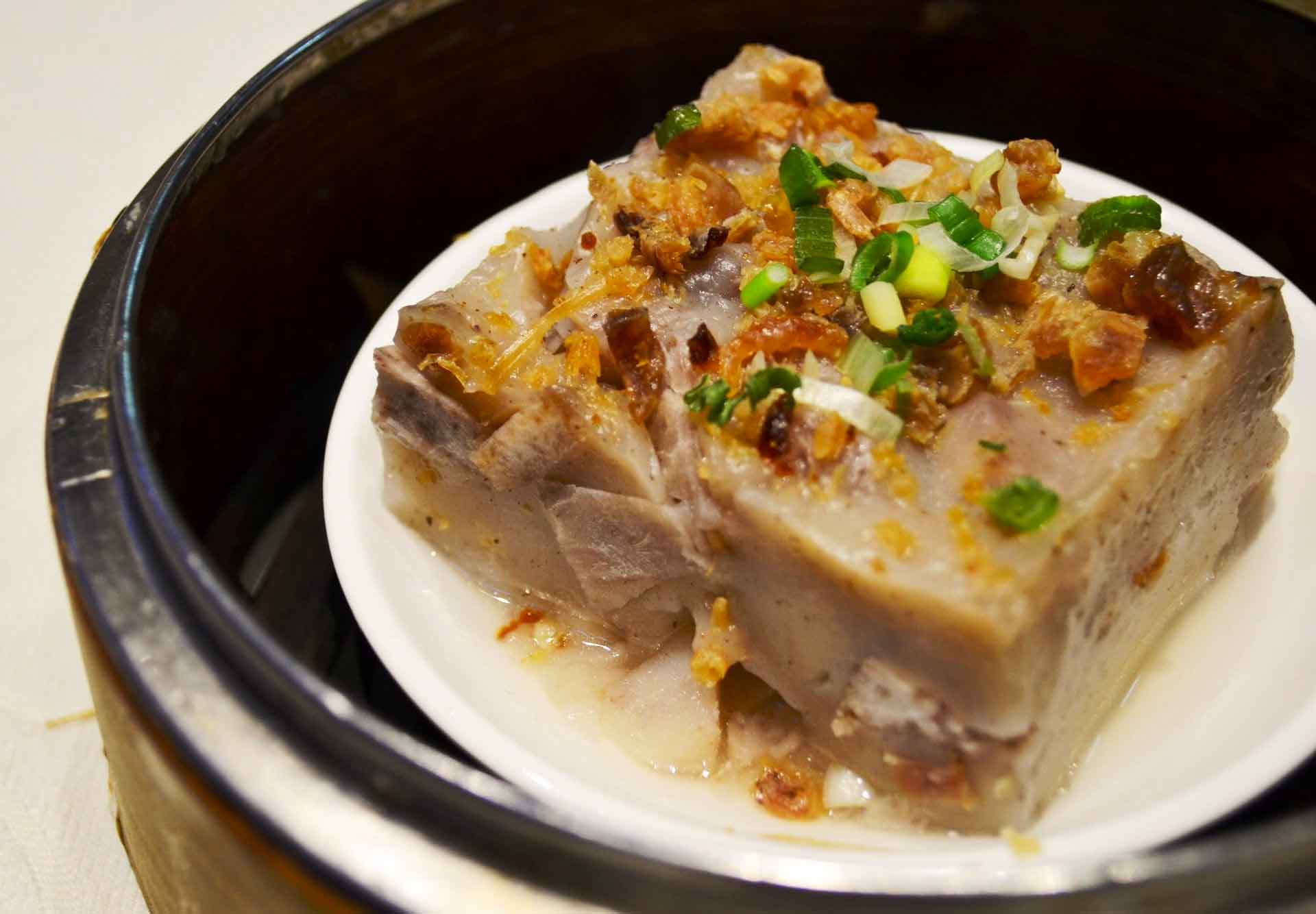Cake made from taro! A traditional dish served during the Chinese New Year and on Sundays as part of the dim sum brunch.
Big, brown, hairy, vaguely coconut-ish tubers are commonly found near carrots and sweet potatoes in Chinese supermarkets. You might be wondering what the heck these hairy brown fibrous beasts are.
Don’t pass judgment too quickly; they’re healthy, tasty in both savory and sweet preparations, and have “healing powers” that boost your immune system, according to traditional Chinese dietary guidelines, despite lacking the roundness of the coconut and the friendly versatility of the potato. The lowly taro root is held to very high standards.
Taro is a versatile starch used in many dishes across Chinese cuisine, from savory stews to sweet desserts (real taro in taro bubble tea beats sugary purple instant powder any day).
However, one of the most well-known uses for taro is in the form of unassuming but adored taro cake. The chewiness comes from white and glutinous rice flour, making it distinctive and satisfying. It is steamed, sliced, and pan-fried with a soy dipping sauce until golden.
Our grandmother’s taro cake recipe is spot-on, thanks to her years of practice. Her version’s ingredients are dried shrimp, scallions, and Chinese sausage (lap cheung). Mmmmm.
Since I was a kid, these have been one of my all-time favorite breakfast foods, and I especially love them when my grandma fries them and tops them with an egg cooked to perfection over easy. We’ve been eating these taro cakes for so long that we finally wrote down the recipe so we can have them whenever we want and share them with you.
You shouldn’t have difficulty locating fresh, high-quality taro between November and February when the taro root is in season.
Ingredients:
- 3 tbsp. of oil (plus more for pan-frying and greasing the pans)
- 3 links of Chinese sausage (chopped into small bite size pieces)
- 1/2 cup of dried shrimp (roughly chopped)
- 8 scallions (chopped, about 2 cups)
- 2 lb. of taro (cut into ½-inch/1cm cubes)
- 2 tsp. of salt
- 1 tsp. of white pepper powder
- 2 tsp. of sesame oil
- 4 cups of water (divided)
- 2 1/2 cups of rice flour
- 1 cup of glutinous rice flour
Instructions:
- Oil should be heated in a wok over moderate heat. Pan-fry the Chinese sausage for 2 minutes before adding. Stir-fry for an additional minute after adding the dried shrimp. Stir-fry the scallion greens and taro for three minutes. Use 2 tsp of salt, 1 tsp of white pepper powder, and 2 tsp of sesame oil as seasonings. Now pour in two-thirds of the water (about 2 1/2 cups/630 ml if you’re making the whole thing), stirring to ensure that everything is submerged. Simmer for 8 minutes with the lid on and the heat on medium-low. Uncover the pot, turn off the heat, and let it cool down a bit.
- Add the remaining 1/3 cup of water (1 1/2 cups/315 ml if making the whole recipe) to the large bowl with the glutinous rice flour, rice flour, and salt. Mix until smooth. Blend in the taro mixture now (no need to wait for it to cool completely). Combine in depth until a thick, cement-like paste is achieved.
- Put the batter in two 9-inch cake pans that have been greased and floured. Make sure there are no voids in the mixture by spreading it evenly in the pan.
- For 45 minutes, use a double-decker steamer for cooking the taro cakes. Be sure to begin with, a sufficient amount of water to avoid running out midway through. Does there need to be a double-decker steamer? The two containers can be steamed at different times. To avoid the water drying out and burning your bamboo steamer, add hot water to your wok every 10 minutes. Put a toothpick in one of the taro cakes and remove it clean after 45 minutes to see if it’s done.
- When the taro cakes have cooled completely, place them in a ziplock bag and place them in the freezer. To enjoy them immediately, cut them into squares. Pan fry the taro cake slices in a skillet with a few tablespoons of oil until golden brown and crispy on both sides. Dot with salt and serve. You can serve these with oyster sauce on the side or eat them as is.
